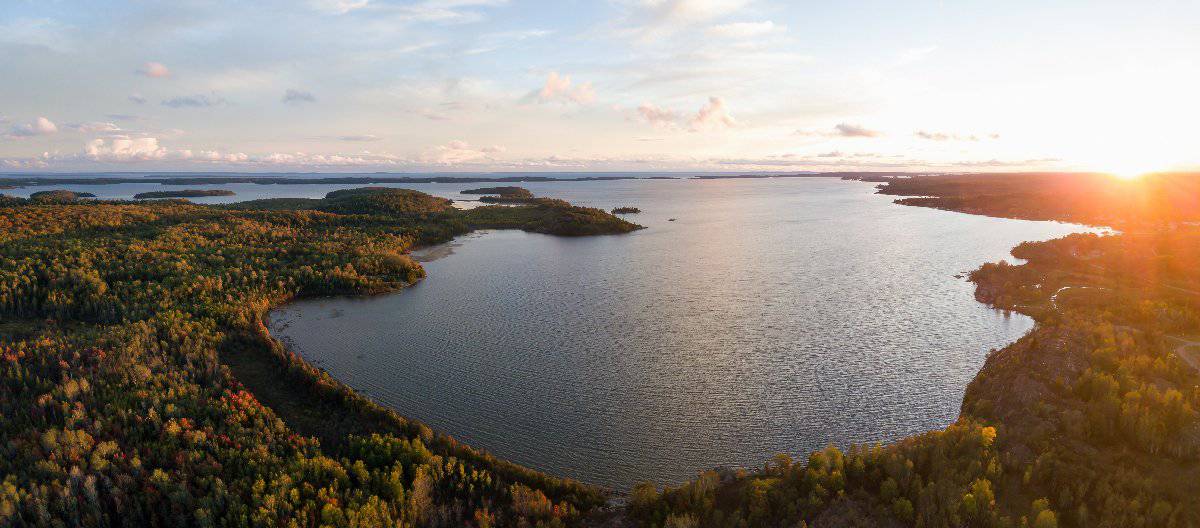Standing on the shores of one of the Great Lakes, you may think that you’re looking out at the ocean. With miles and miles of beautiful shoreline, Lake Huron is the second largest of the Great Lakes. It is between Ontario and Michigan. Lake Huron is the fifth-largest freshwater lake in the world! It covers a lot of area, but how about its width?
Lake Huron is around 183 miles wide. It is slightly longer than it is wide, with an overall length of around 206 miles. It is irregularly shaped, so the exact width varies depending on where you are on the lake. Lake Huron covers around 23,000 square miles. This means that Lake Ontario, the smallest of the Great Lakes, could fit inside Lake Huron three times!
This lake is known for its beautiful (and extensive) coastline. There are just under 4,000 miles of shoreline on Lake Huron. This has also given the lake a reputation as a tough place to navigate and resulted in numerous shipwrecks.
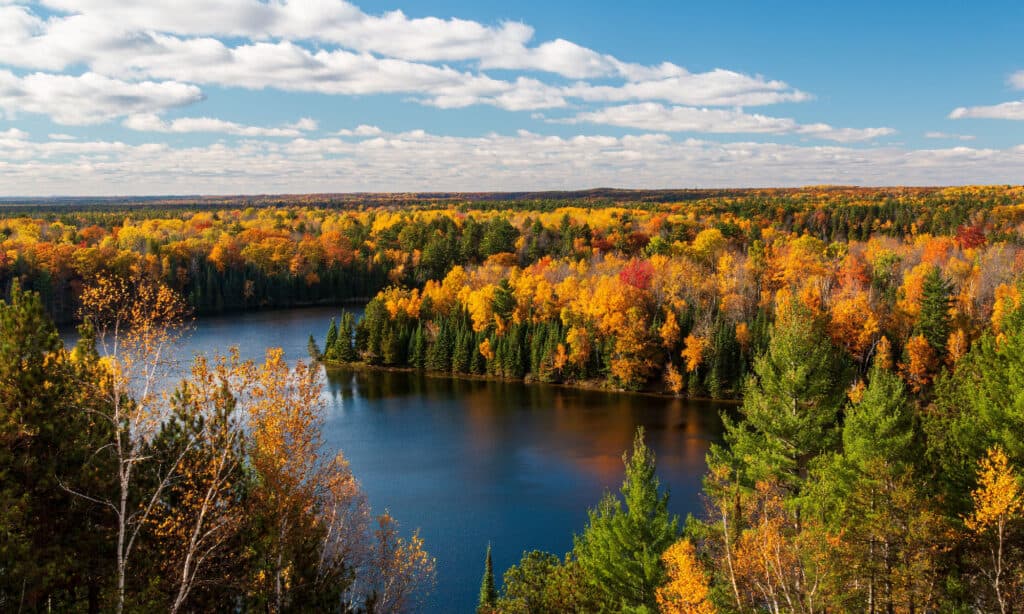
The fall foliage on islands in Lake Huron is spectacular.
©iStock.com/Paul Massie Photography
The History of Lake Huron
Like many parts of North America, Lake Huron was home to indigenous tribes for many years. Written records mention the Native Americans who lived in the area and notes that they were called the Huron. As European settlers came to the area, the Native American tribes remained by the lake.
The area around Lake Huron saw a lot of French explorers and traders. It was originally called La Mer Douce. This translates to “the freshwater sea.” It’s no surprise that early records of the area mention this description since the lake must have looked like the oceans that many of these explorers had already traveled.
Other records name the lake “Lac des Hurons.” The Huron tribes had at least one large settlement of around 100 buildings or more on the shore. Later, the lake was officially named Lake Huron in honor of the tribes that lived in the area. As settlements grew, towns became larger and the area developed into the Lake Huron that we know today.
Great Lakes Storm of 1913
In 1913, a notable storm hit the Great Lakes, including Lake Huron. Hurricane-force winds combined with snow and ice to create a “White Hurricane.” The National Weather Service said that it was the “largest inland maritime disaster.” Over 250 people were killed in major shipwrecks, mostly in Lake Huron where the center of the storm was located. High winds were one issue, although many captains and ships were already familiar with navigating hurricanes. The real threat was the hurricane at the same time as the whiteout. The disaster led to the development of new weather monitoring technology.
Shipwrecks around Lake Huron
One of the most notable places in Lake Huron is Thunder Bay. Now a National Marine Sanctuary, the area is known for its shipwrecks and the amazing wildlife and ecosystems that have developed. You can do everything from snorkeling to kayaking on the water. There are over 200 years of ships represented in the area. Some are extreme dives suitable for experienced scuba divers. Others are good for beginners. There are even some shipwrecks that have not been fully explored yet. If you can’t make it to Lake Huron or just want to learn about the shipwrecks without getting wet, you can enjoy the Virtual Reality experience through the Maritime Center.
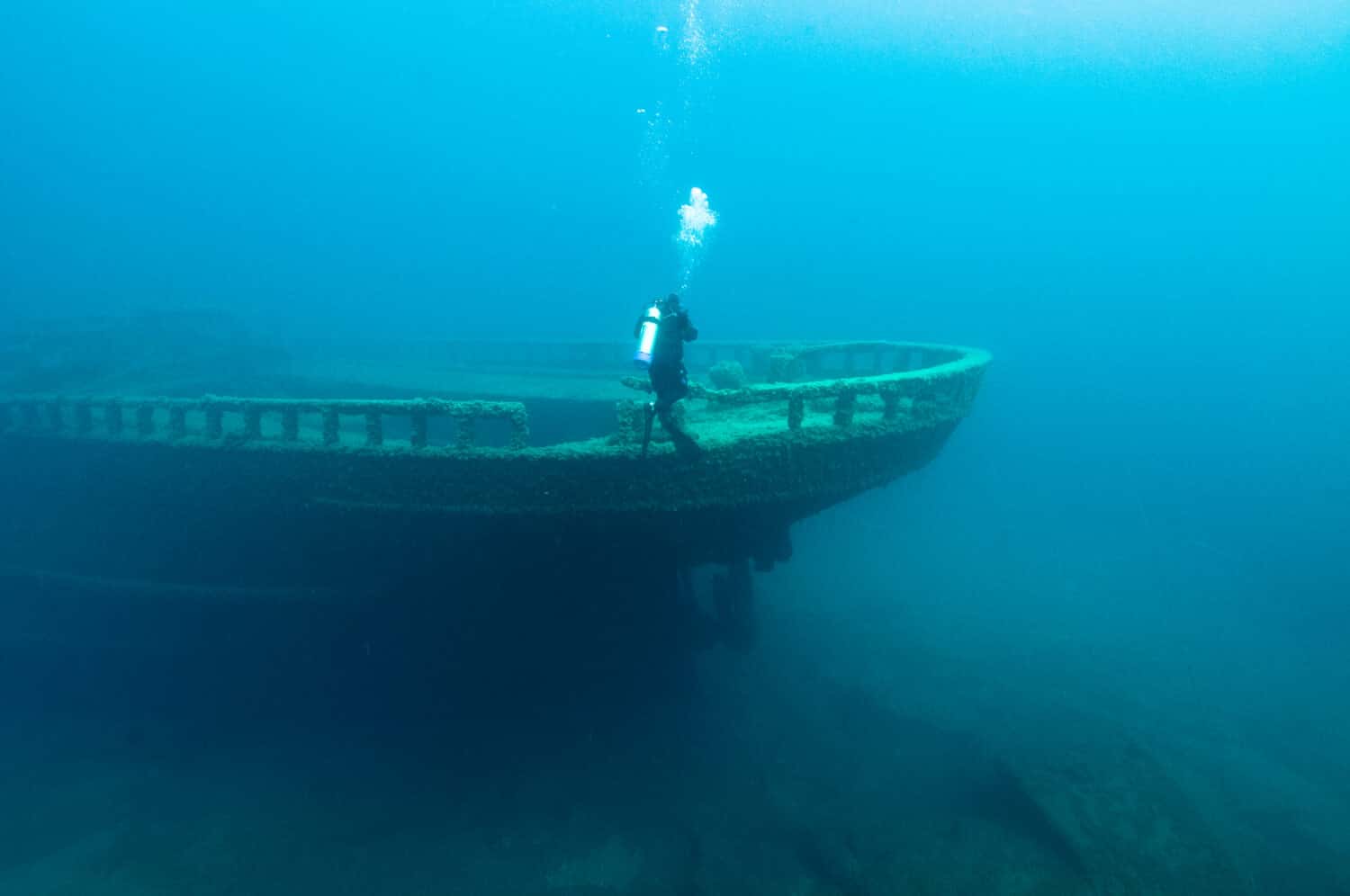
A diver explores a shipwreck in Lake Huron’s Thunder Bay.
©lego 19861111/Shutterstock.com
What Is There to Do around Lake Huron?
For Michigan visitors, the Great Lakes Maritime Heritage Center is the perfect place to start. This free museum in Alpena teaches about the history and environment of Lake Huron through interactive exhibits. They have dive tubes that go over a shipwreck and a hurricane simulator. You can also get tickets for a glass-bottomed boat tour of the lake. If you prefer to bring your own water vessels, kayaking, and stand-up paddleboarding are both popular in many parts of Lake Huron. Just be sure to watch the weather and plan your trip for the warmer months.
Lake Huron is a great place to visit and see the sights. Fishing is popular in Lake Huron, whether you want to fish from the shore, take out a boat, or go with a fishing charter. Walleye, lake trout, rainbow trout, northern pike, yellow perch, smallmouth bass, and largemouth bass are all plentiful in the lake. To get the best fishing, consider going with a charter that takes care of finding the right lures and gear, as well as getting the required permits. Some even cook up what you catch at the end of the day! If you prefer eating seafood to catching it, there are plenty of restaurants that have some of the freshest fish available.
Visitors today can see many of the shipwrecks from the 1913 storm, as well as others. The water is clear and you can easily see the ghostly shipwrecks below the water. In fact, there are numerous shipwreck tours. The many lighthouses around Lake Huron are also a popular attraction. Many are still in operation and you can see just the role that these structures play in maritime safety. They also happen to be very picturesque and great places for a photo op.
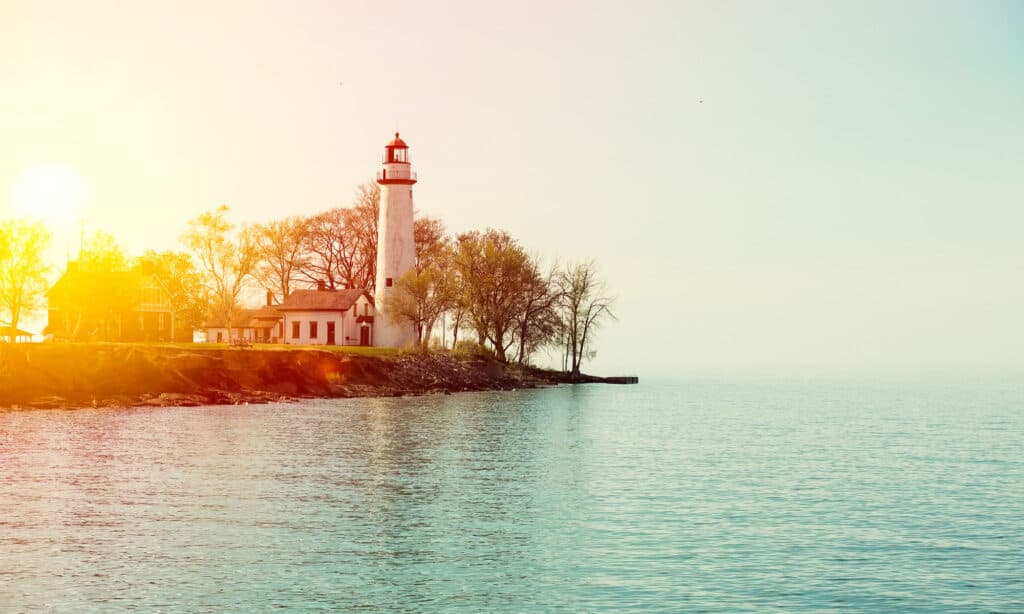
The Pointe aux Barques Lighthouse on Lake Huron is a great place to visit.
©iStock.com/haveseen
What Animals Live Around the Great Lakes?
Besides the many fish species, there are also plenty of land animals that live in the area. In fact, the Great Lakes are great places for animals because there are a lot of natural areas and habitats. Smaller animals such as squirrels, chipmunks, raccoons, and songbirds all call this area home. Many venture into towns and urban areas. Some of the larger species include moose, black bears, and wolves. These can be quite dangerous if you encounter them in the wild and do not give them their space. Fortunately, many natural areas track their movements and provide updates on sightings nearby. Great blue herons are also beautiful birds to see, especially in flight over the water.
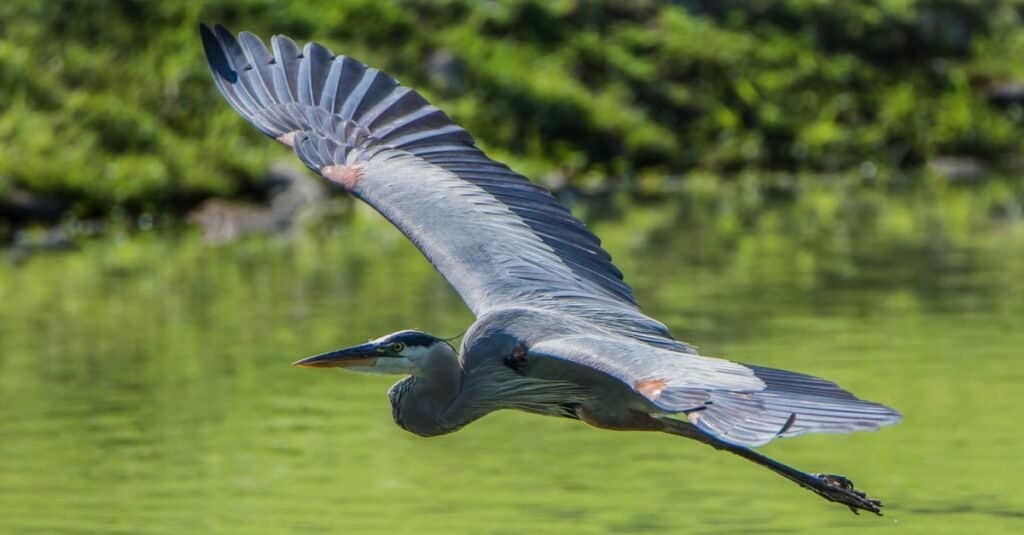
Great Blue Heron flying over water.
©Tom Franks/Shutterstock.com
How Does Lake Huron Compare to the Other Great Lakes?
Lake Huron is the second largest of the Great Lakes by area. The only lake larger is Lake Superior. However, Lake Huron is the widest Great Lake. This is an important distinction since Lake Superior is almost always listed as the largest of the Great Lakes. While this is true, there are some cases when the greater width of Lake Huron is notable.
| Lake | Area (square miles) | Width (miles) |
| Lake Huron | 23,000 | 183 |
| Lake Superior | 31,700 | 160 |
| Lake Michigan | 22,300 | 118 |
| Lake Erie | 9,910 | 57 |
| Lake Ontario | 7,340 | 53 |
Lake Huron also has the longest shoreline. There are an amazing 3,830 miles of shoreline on Lake Huron. this means a lot of fishing, lakeside towns with restaurants, accommodations, and beaches, as well as lighthouses. With so much shoreline, it’s no wonder that Lake Huron is also known for its shipwrecks. Captains moving around on Lake Huron needed to be very aware of nautical maps, potential hazards, and weather conditions before they got underway.
How Long Would It Take a Swimmer to Swim Across the lake?
The average strong swimmer covers around 2 miles per hour on a good day. This means that it would take them around 91 hours, or just under 4 days, of continuous swimming to get across Lake Huron. A few people have made it all the way across, gaining a lot of attention for the amazing feat. Some have even swam across all five of the Great Lakes. Considering Lake Huron is the widest, this must have been quite a challenge!
Vicki Keith was the first person to swim across Lake Huron. She did so in 1988, taking 46 hours and 55 minutes to make the trip. She completed swims across all five great lakes in the same year. Paula Stephenson swam across Lake Huron in 1996 in just 22 hours and 30 minutes.
Thank you for reading! Have some feedback for us? Contact the AZ Animals editorial team.

